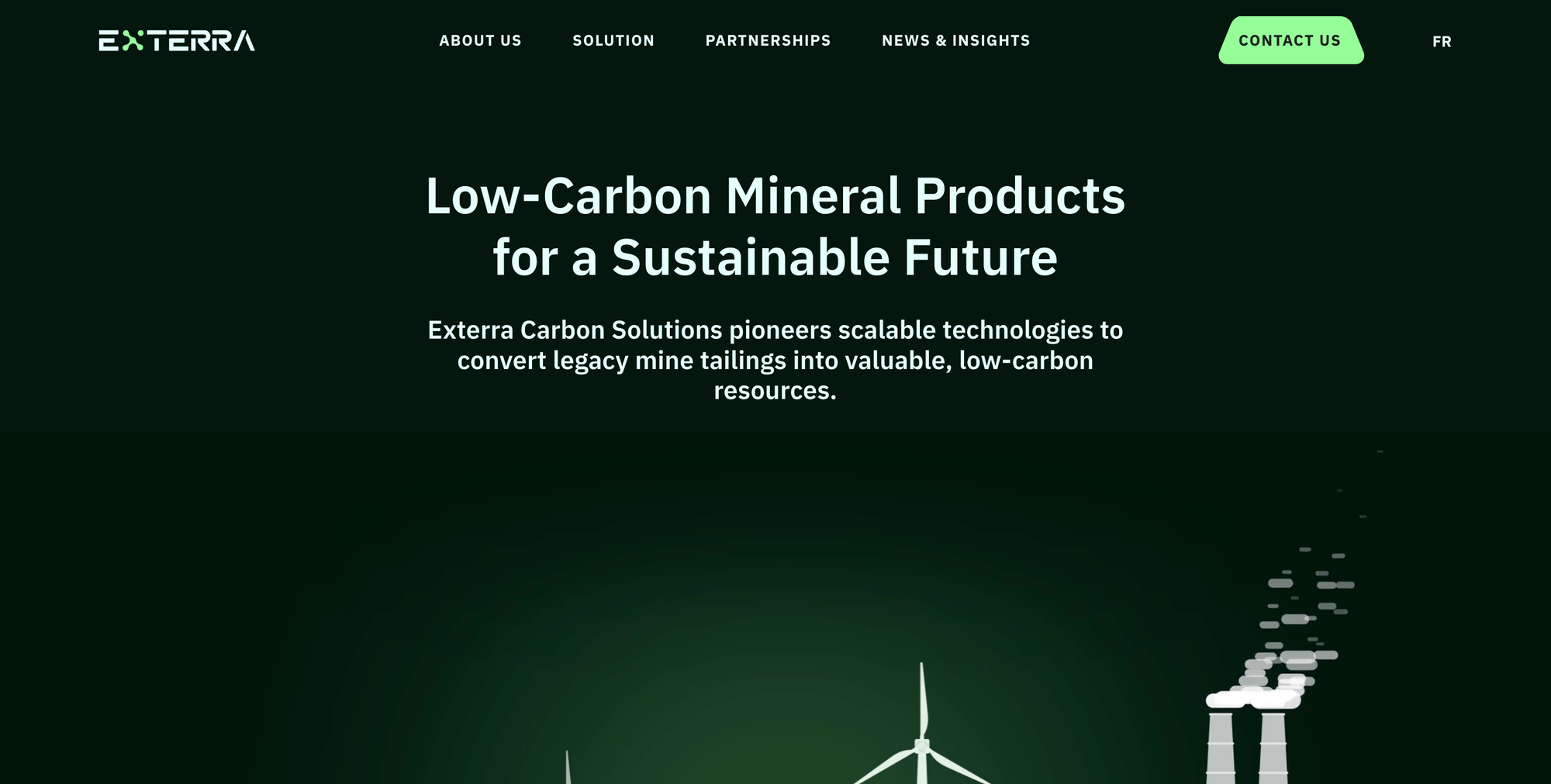Canadian cleantech company Exterra Carbon Solutions has just announced a CAD $20 million Series A round to scale its transformative approach to legacy mining waste.
With a mission to integrate the mining industry into the circular economy, Exterra is unlocking scalable, permanent carbon removal—not through underground carbon storage, but by turning toxic waste into valuable, low-carbon mineral products.
🌍 From Asbestos Waste to Net-Zero Materials
Based in Montréal, Exterra is building the world’s largest asbestos mine tailings processing facility, known as Hub One, set to break ground in 2027 in Québec.
This project will:
- Process over 300,000 tonnes of mine waste annually
- Fully eliminate remaining asbestos fibers
- Produce carbon-neutral magnesium oxide (MgO), nickel concentrate for EV batteries, and amorphous silica for low-carbon building materials
- Permanently store CO₂ in mineral form, creating auditable, durable carbon credits
With access to over 800 million tonnes of legacy asbestos mine tailings in Québec alone, the region could become a global leader in producing climate-positive materials for the green economy.

🔬 Two Powerful Technologies Behind the Impact
Exterra’s breakthrough is powered by a dual-circuit platform:
1. LOW™ – Low-carbon Oxide from Waste
Extracts reactive alkaline minerals (like CaO and MgO) from mine tailings using electrifiable thermochemical processes.
✅ Fully scalable
✅ Integrates with existing industrial workflows
2. ROC™ – Reactive Oxide to Carbonate
Converts those oxides into stable carbonate minerals by directly mineralizing CO₂—without needing underground injection or carbon capture infrastructure.
✅ Operates at atmospheric pressure
✅ Converts CO₂ to rock in hours
✅ No risk of reversal
Together, these technologies transform environmental liabilities into valuable, climate-aligned resources, while creating carbon removal credits that are:
- 🧾 Auditable
- 🪨 Permanent
- 🔁 Scalable
- 🌱 Full of co-benefits
💡 Why It Matters
The future of carbon removal depends on more than capturing CO₂—it requires permanent, verifiable, and cost-effective storage. Exterra’s model answers this call while reducing the ecological footprint of the mining industry and turning waste into resources that power the clean energy transition.
📉 Lower costs than traditional carbon capture
🏗️ Smaller plant footprint for rapid deployment
🌎 Adaptable to a wide range of waste streams
Who’s Backing Exterra?
This Series A was co-led by Clean Energy Ventures and BDC Capital, with participation from:
- 🇨🇦 Government of Québec
- 🌊 MOL Switch (global shipping & infrastructure group)
- ⚡ Kinetics (a Karpowership cleantech initiative)
In addition to funding, Clean Energy Ventures and BDC Capital will join Exterra’s board, further strengthening the company’s leadership bench.
Exterra is also partnering with leading institutions to advance its work:
- BASF (for CCS projects)
- Winsome Resources (strategic mining partnership)
- Université de Sherbrooke, Université Laval, Foresight Canada, SGS, and others
🗣️ What They’re Saying
“We’re commercializing a dual-pronged platform that valorizes over 90% of minerals from asbestos residues while creating one of the shortest nickel supply chains for EV electrification in North America.”
— Olivier Dufresne, CEO, Exterra
“It’s rare to see a process that transforms environmental liabilities into global assets. Exterra's tech is scalable, impactful, and replicable.”
— Daniel Goldman, Clean Energy Ventures
“This is the kind of innovation Canada needs to lead the energy transition.”
— Pascal Lanctot, BDC Capital
Causeartist Takeaway
Exterra is redefining what climate tech can be. By fusing mining remediation, carbon removal, and critical mineral production, the startup is creating a low-carbon industrial future rooted in circularity.
As global demand grows for verifiable carbon credits and sustainable battery materials, Exterra’s model could become a blueprint for climate-positive resource recovery worldwide.







